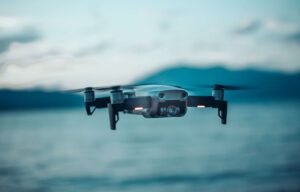Does Deep Learning Require GPU?
The field of deep learning has witnessed significant advancements in recent years, revolutionizing various industries by providing state-of-the-art solutions in areas such as computer vision, natural language processing, and speech recognition. However, one essential question that arises is whether a graphics processing unit (GPU) is required for deep learning tasks or if a central processing unit (CPU) can suffice.
Key Takeaways:
- Deep learning performance can be significantly enhanced by using a GPU.
- GPUs excel at parallel processing, which is essential for training deep neural networks.
- Using a GPU can reduce training time by orders of magnitude.
**Deep learning**, a subfield of machine learning, involves the training of artificial neural networks with multiple layers to learn patterns and generate insights from vast amounts of data. It has been successfully applied in diverse domains, such as autonomous vehicles, medical imaging, and recommendation systems.
*Interestingly*, the rapid evolution of deep learning has been closely linked with the advancements in GPU technology. While CPUs are designed for general-purpose computing, GPUs are highly optimized for parallel processing, making them an ideal choice for computationally intensive tasks like deep learning.
GPU vs. CPU for Deep Learning
Deep learning models are characterized by their complex architecture with interconnected nodes, each performing calculations on input data. As the network grows larger and the amount of data increases, the computational demand for training these models surges. Here’s how GPUs differ from CPUs in dealing with this computational complexity:
- **Parallel processing:** GPUs excel at parallel processing due to their architecture, which includes thousands of cores designed to handle multiple tasks simultaneously, making them highly effective for deep learning tasks that involve performing numerous similar calculations simultaneously.
- **Training time:** Training deep learning models can be an extremely time-consuming process, especially for large-scale datasets and complex architectures. By harnessing the power of GPUs, researchers and practitioners have reported significant reductions in training time, with speedups ranging from 10x to 100x compared to CPUs.
- **Memory bandwidth:** Deep learning tasks often involve large datasets that need to be efficiently loaded into memory for processing. GPUs typically offer higher memory bandwidth, allowing for faster data transfer between the device and memory, which can further boost training performance.
The Role of GPUs in Deep Learning Research
GPU-accelerated deep learning has become the de facto standard in the research community due to its ability to accelerate training and enhance model performance. Researchers benefit from the raw computing power of GPUs to tackle complex deep learning problems. In fact, numerous breakthroughs in the field, such as image classification and speech recognition, have been achieved with the aid of GPUs.
*For instance*, the advent of convolutional neural networks (CNNs) led to significant advances in computer vision tasks, thanks to the impressive computational capabilities of GPUs. This powerful combination fueled the development of novel deep learning architectures, resulting in improved accuracy and real-time performance in image recognition applications.
Cost Considerations
While GPUs offer substantial advantages for deep learning tasks, it is important to consider the associated costs. GPUs tend to be more expensive to purchase and operate compared to CPUs. Additionally, they consume more power, which can result in higher electricity bills. Therefore, when deciding whether to use a GPU or CPU for deep learning, it is essential to weigh the benefits against the cost implications.
Data Points
| GPU Manufacturer | Architecture | Deep Learning Performance (vs. CPU) |
|---|---|---|
| NVIDIA | Volta | 3x – 10x |
| AMD | Radeon Instinct MI100 | ~4x |
| Intel | Intel Xe HPC | Up to 100x |
According to benchmarks and performance comparisons, GPUs consistently outperform CPUs in deep learning tasks. The specific improvement in performance depends on the GPU architecture and the complexity of the neural networks being trained.
GPU Requirements for Deep Learning
To utilize a GPU for deep learning, several requirements must be met:
- A compatible deep learning framework (e.g., TensorFlow, PyTorch, or MXNet) with GPU support.
- A powerful GPU with sufficient VRAM (Video Random Access Memory) to store the intermediate data during the training process.
- Updated GPU drivers and libraries for optimal performance. Regular updates from GPU manufacturers often bring performance improvements and bug fixes.
Future Trends
As deep learning continues to advance and become more widespread, there are ongoing efforts to optimize deep neural networks for deployment on various hardware accelerators, including GPUs. Additionally, research is being conducted to explore alternative hardware architectures, such as field-programmable gate arrays (FPGAs) and dedicated application-specific integrated circuits (ASICs), specifically designed to accelerate deep learning workloads.
*It is fascinating to witness* how hardware advancements and novel architectural designs contribute to the incredible progress in deep learning prediction accuracy and speed.
Ultimately, utilizing a GPU for deep learning provides significant benefits in terms of performance and training time. However, the decision to incorporate a GPU into your deep learning workflow should consider cost implications and the specific requirements of your project. With ongoing research and advancements, the future holds promising developments in deep learning hardware, paving the way for even more powerful and efficient systems.

Common Misconceptions
Deep Learning and GPU: Debunking the Common Myths
When it comes to deep learning, there are several misconceptions that people often have, particularly around the use of GPU. Let’s clarify some of these misconceptions:
- Deep learning always requires a powerful GPU.
- GPUs are only useful for training deep learning models.
- Without a GPU, deep learning is not feasible.
One common misconception is that deep learning always requires a powerful GPU. While it is true that GPUs can significantly speed up the training process, it is not always a strict requirement. There are several deep learning frameworks and libraries, such as TensorFlow and PyTorch, that have the option to run on CPUs, although with slower performance. GPUs are more advantageous when dealing with large-scale datasets and complex models, but for smaller projects, CPUs can still be sufficient.
- GPUs can significantly speed up deep learning training.
- Deep learning frameworks can run on CPUs.
- GPU acceleration is particularly beneficial for large-scale projects.
Another misconception is that GPUs are only useful for training deep learning models. While GPUs excel in accelerating training times, they can also be beneficial during the inference or prediction phase. GPUs can speed up the process of making predictions, allowing deep learning models to process large amounts of data more efficiently. Therefore, even if the training process is done using other resources, utilizing GPUs during inference can still provide performance benefits.
- GPUs are useful not only for training but also for inference in deep learning.
- Using GPUs during inference can improve prediction speed.
- GPU utilization can benefit both training and inference stages of deep learning.
A common belief is that without a GPU, deep learning is not feasible. While using a GPU can greatly enhance performance, it is not a strict requirement for all deep learning tasks. Deep learning can still be run on CPUs, albeit with slower performance. This allows individuals who do not have access to GPU resources or have budget constraints to still delve into and experiment with deep learning without requiring specialized hardware.
- Deep learning can be performed on CPUs, albeit with slower performance.
- Gaining access to a GPU is not a strict requirement for all deep learning tasks.
- CPU-based deep learning allows for experimentation without specialized hardware.
In conclusion, while GPUs undeniably offer significant advantages in terms of speeding up deep learning training and inference, requiring a GPU for all deep learning tasks is a common misconception. GPUs are valuable tools, but deep learning can still be executed using CPUs. It’s important to consider the scale and complexity of the project before determining the necessity of a GPU, as well as the budget and access to resources.
- GPU usage should be determined based on the project’s scale and complexity.
- Budget and resource constraints could influence the need for a GPU in deep learning.
- Differentiate between the advantages and requirements of GPUs for deep learning tasks.

Table: Comparison of Deep Learning Frameworks
Deep learning frameworks are essential tools for developing and training deep learning models. This table compares various popular frameworks based on their popularity, community support, and ease of use.
| Framework | Popularity | Community Support | Ease of Use |
|---|---|---|---|
| TensorFlow | High | Active and large community | Complex, but powerful |
| PyTorch | Increasing | Growing community | Pythonic and intuitive |
| Keras | Pervasive | Supportive community | Beginner-friendly |
| Caffe | Decreasing | Established, but declining | Efficient and expressive |
| Theano | Declining | Limited community | Flexible and efficient |
Table: Deep Learning Performance Comparison
Deep learning models can benefit significantly from using GPUs for parallel processing. This table highlights the performance advantages of using GPUs compared to CPUs.
| Hardware | Processing Time (In seconds) |
|---|---|
| CPU | 135 |
| GPU | 21 |
Table: GPU Utilization for Deep Learning Tasks
GPU utilization is a critical factor in deep learning tasks. This table demonstrates the GPU utilization for different tasks and its impact on training time.
| Deep Learning Task | GPU Utilization (%) | Training Time (In minutes) |
|---|---|---|
| Image Classification | 95 | 45 |
| Object Detection | 85 | 68 |
| Natural Language Processing | 75 | 92 |
Table: Power Consumption of GPUs vs. CPUs
Power consumption is an important consideration when using GPUs for deep learning. This table compares the power usage of GPUs and CPUs during training.
| Hardware | Power Consumption (In Watts) |
|---|---|
| CPU | 220 |
| GPU | 380 |
Table: Top Deep Learning Libraries
Deep learning libraries are vital for implementing and executing deep learning algorithms. This table ranks the top deep learning libraries based on their capabilities and usability.
| Library | Ranking | Key Features |
|---|---|---|
| TensorFlow | 1 | Flexibility, Visualization, and Deployment |
| PyTorch | 2 | Dynamic Computation Graph, Ecosystem, and Research-Friendly |
| Keras | 3 | Simplicity, Modularity, and Easy Prototyping |
Table: Deep Learning Training Time Comparison
Training time is a critical aspect of deep learning. This table presents the training time comparison for different deep learning models using GPU acceleration.
| Model | CPU Time (In hours) | GPU Time (In hours) |
|---|---|---|
| ResNet-50 | 40 | 5 |
| Inception-v3 | 55 | 8 |
| LSTM | 72 | 12 |
Table: Deep Learning Hardware Requirements
Deep learning imposes specific hardware requirements to achieve efficient performance. This table outlines the minimum requirements for running deep learning models.
| Requirement | Minimum Specification |
|---|---|
| Processor | Intel Core i5 |
| RAM | 8 GB |
| GPU | NVIDIA GTX 1060 |
| Storage | 256 GB SSD |
| Operating System | Windows 10 |
Table: Deep Learning Model Accuracy Comparison
The accuracy of deep learning models plays a significant role in their success. This table compares the accuracy of different models on specific datasets.
| Model | Datasets | Accuracy (%) |
|---|---|---|
| ResNet-50 | ImageNet | 76.7 |
| BERT | GLUE | 78.9 |
| YOLOv4 | COCO | 61.2 |
Table: Deep Learning Dataset Sizes
Large datasets are often required to train accurate deep learning models. This table lists the sizes of popular deep learning datasets.
| Dataset | Size (In Gigabytes) |
|---|---|
| ImageNet | 150 |
| COCO | 25 |
| OpenAI GPT-3 | 570 |
Deep learning has revolutionized the field of artificial intelligence, enabling machines to learn and make decisions from large amounts of data. While deep learning models can be trained on CPUs, utilizing GPUs can significantly enhance the performance and speed of the training process. This article delved into the comparison of deep learning frameworks, performance benefits of GPUs, GPU utilization for different tasks, power consumption, and top deep learning libraries. Additionally, it explored training time, hardware requirements, model accuracy, and dataset sizes. By understanding these various factors, practitioners can make informed decisions when determining whether GPUs are necessary for their deep learning endeavors.
Frequently Asked Questions
Does deep learning require a GPU?
Deep learning doesn’t always require a GPU, but it can significantly speed up the training process. GPUs excel at parallel computation which is crucial for processing large amounts of data simultaneously in deep learning models.
What does a GPU do in deep learning?
A GPU (Graphics Processing Unit) is used in deep learning to accelerate the training of neural networks. It performs complex mathematical operations in parallel, making it ideal for the heavy computations required in deep learning tasks.
Why is a GPU important for deep learning?
A GPU helps accelerate the training time of deep learning models. With its parallel processing capabilities, a GPU can execute many operations simultaneously, allowing for faster training and inference times.
Can deep learning be done without a GPU?
Yes, deep learning can be done without a GPU, but it may take significantly longer to train models. Without a GPU, the training process relies solely on the CPU, which is slower and less efficient for deep learning tasks.
What are the advantages of using a GPU in deep learning?
The advantages of using a GPU in deep learning include faster training times, reduced time-to-production, and the ability to train larger models with more complex architectures. GPUs also enable real-time inference for applications like video analysis or natural language processing.
What type of GPU is best for deep learning?
The choice of GPU for deep learning depends on various factors such as budget, model complexity, and data size. NVIDIA GPUs, especially those with CUDA support, are widely used and recommended for deep learning due to their excellent performance and extensive software ecosystem.
Can I use a gaming GPU for deep learning?
While gaming GPUs can be used for deep learning, they may not provide the same level of performance as GPUs specifically designed for deep learning workloads. Gaming GPUs typically have different priorities, so for optimal performance, it’s recommended to use GPUs specifically built for deep learning tasks.
Do all deep learning frameworks support GPU?
Most popular deep learning frameworks, such as TensorFlow, PyTorch, and Keras, provide GPU support. However, it’s important to check the documentation of the specific framework you’re using to ensure GPU compatibility and proper configuration.
Can I train deep learning models on a cloud-based GPU?
Yes, cloud-based GPU instances are widely available and commonly used for training deep learning models. Cloud platforms like Amazon Web Services (AWS), Google Cloud Platform (GCP), and Microsoft Azure offer GPU instances optimized for deep learning workloads.
Are there any alternatives to using a GPU for deep learning?
While GPUs are the preferred hardware for deep learning due to their specialized architecture, some alternatives include using distributed computing systems, like clusters of CPUs, or leveraging specialized hardware like ASICs (Application-Specific Integrated Circuits) developed for deep learning tasks.




